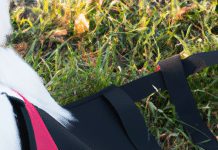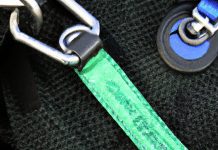In our latest article, we address the important question that many pet owners may have: can I use a harness on a dog with a tracheal collapse? Tracheal collapse is a medical condition that can cause discomfort and breathing difficulties for our furry friends. However, with the right knowledge and guidance, using a harness can be a safe and effective option for dogs with this condition. Join us as we explore how to choose the right harness, provide support for their collapsing trachea, and ensure our beloved companions can still enjoy their daily walks with comfort and ease.
What is tracheal collapse?
Tracheal collapse is a medical condition that commonly affects small and toy breeds of dogs. It occurs when the rings of cartilage that support the trachea, or windpipe, become weak and collapse under pressure, causing breathing difficulties. This condition can be quite distressing for both dogs and their owners, as it can lead to coughing, wheezing, and difficulty exercising or performing daily activities. Understanding how to manage tracheal collapse is essential for ensuring the well-being of your furry friend, especially when it comes to using a harness.
Understanding the risks of using a harness on a dog with tracheal collapse
While using a harness on a dog with tracheal collapse may seem like a practical solution, it is important to understand that certain harness styles may actually exacerbate the condition. Traditional harnesses that attach along the dog’s back put pressure on the neck and throat, which can trigger a collapse of the weakened trachea. This can further restrict the airflow and make it even more difficult for your dog to breathe comfortably.
Choosing a suitable harness for a dog with tracheal collapse
When selecting a harness for a dog with tracheal collapse, there are several factors to consider to ensure the safety and comfort of your furry companion.
Table of Contents
Consider the type of harness
Opting for a harness style that does not put pressure on the neck and throat is crucial. Front-clip harnesses are a suitable option as they distribute the pressure more evenly along the dog’s chest and shoulders, reducing the risk of triggering a tracheal collapse episode. These harnesses can provide better control and support while minimizing strain on the trachea.
Look for adjustable straps
Having adjustable straps on the harness is important because it allows you to customize the fit according to your dog’s specific measurements. This ensures a snug fit without putting excessive pressure on the trachea, reducing the risk of further complications.
Ensure a secure fit
A proper fitting harness is essential for the comfort and safety of your dog. Make sure the harness is snug but not too tight. It should allow your dog to move freely without feeling constricted. Avoid harnesses that are too loose, as they may shift around and put pressure on the trachea during walks.
Opt for a lightweight and breathable material
Choosing a harness made from lightweight and breathable materials is beneficial for dogs with tracheal collapse. These materials help to keep your dog cool and comfortable, especially during warmer weather or longer walks. Look for materials such as mesh or nylon, which are known for their breathability and durability.
Avoid using a collar
Collars can put additional strain on the trachea and should be avoided for dogs with tracheal collapse. Collars can also exacerbate coughing and choking in dogs with this condition. Opting for a harness is a safer and more comfortable alternative that helps distribute pressure more evenly.
Consulting with your veterinarian
Before using a harness on a dog with tracheal collapse, it is essential to consult with your veterinarian. They can provide guidance specific to your dog’s condition and recommend the best approach for managing tracheal collapse while on walks. Your vet may also be able to suggest specific harness brands or styles that are suitable for your dog’s needs.
Steps to safely use a harness on a dog with tracheal collapse
Once you have selected a suitable harness in consultation with your veterinarian, there are a few steps you should follow to ensure safe and comfortable use for your dog.
Measure your dog for the right size
To ensure a proper fit, it is important to measure your dog accurately. Measure the circumference of your dog’s chest, just behind the front legs. Use these measurements as a guide when selecting the appropriate size of harness. Remember, each brand may have slightly different sizing, so be sure to consult the specific sizing chart for the harness you are purchasing.
Introduce the harness gradually
Before heading out on a walk, introduce the harness to your dog gradually. Allow them to sniff and become familiar with it by offering treats or positive reinforcement. This gradual introduction helps your dog associate the harness with positive experiences and reduces any potential anxiety or resistance.
Ensure proper positioning
Once your dog is comfortable with the harness, it is important to ensure that it is positioned correctly. The front-clip attachment should be centered on the dog’s chest, and the straps should fit snugly but not be overly tight. Make any necessary adjustments to ensure the proper positioning and fit.
Monitor your dog’s comfort and breathing
During walks, closely observe your dog to ensure their comfort and breathing patterns. If you notice any signs of distress, such as excessive panting or struggling to breathe, it may be necessary to adjust or remove the harness. Always prioritize your dog’s well-being and comfort during walks.
Regularly inspect the harness for damage
It is crucial to regularly inspect the harness for signs of wear and tear. Over time, harnesses can become frayed or damaged, compromising their effectiveness and potentially causing discomfort for your dog. Replace the harness if you notice any signs of damage to ensure your dog’s safety.
Alternative options for walking a dog with tracheal collapse
If a harness is not a suitable option for your dog with tracheal collapse, there are alternative methods you can consider for walking and exercising your furry friend.
Using a harness with a front clip
As mentioned earlier, a front-clip harness can be a suitable alternative for dogs with tracheal collapse. These harnesses distribute the pressure more evenly, reducing the strain on the trachea and providing better control during walks. The front clip attachment helps redirect the dog’s focus, making it easier to discourage pulling or excessive strain on the trachea.
Consider using a sling or support harness
For dogs with severe tracheal collapse or those who have difficulty walking, using a sling or support harness can provide additional assistance. These devices support the dog’s chest and abdomen, taking the pressure off the trachea and making it more comfortable for them to move around. Support harnesses are particularly useful for dogs who struggle with balance or mobility issues.
Training for loose leash walking
Teaching your dog to walk calmly on a loose leash can also be beneficial for managing tracheal collapse during walks. Positive reinforcement training techniques, such as reward-based methods and using treats, can be effective in teaching your dog to walk calmly without pulling or exerting excessive pressure on the trachea. Patience and consistency are key in training your dog to walk on a loose leash.
Caring for a dog with tracheal collapse
In addition to the precautions and alternatives mentioned above, there are several other ways to care for a dog with tracheal collapse and help manage their condition effectively.
Managing weight and exercise
Maintaining a healthy weight is important for dogs with tracheal collapse, as excess weight can put additional strain on the respiratory system. Consult with your veterinarian to determine the appropriate diet and exercise plan for your dog to help them maintain a healthy weight without overexerting themselves.
Avoiding triggers like excitement or pulling
Avoiding situations that may trigger excessive excitement or pulling is recommended for dogs with tracheal collapse. These behaviors can worsen the condition and lead to more frequent episodes of coughing or breathing difficulties. Keep your dog calm during walks and avoid situations where they may become overly excited or anxious.
Keeping the living environment calm and free from irritants
To minimize any additional strain on your dog’s respiratory system, it is important to keep their living environment calm and free from irritants. Avoid using harsh cleaning chemicals or fragrances that may irritate their airways. Keep the air quality in your home clean and consider using a humidifier to help ease any discomfort related to tracheal collapse.
Following any medication or treatment plan prescribed by your veterinarian
If your dog has been diagnosed with tracheal collapse, it is crucial to follow any medication or treatment plan prescribed by your veterinarian. They may recommend medications such as cough suppressants or bronchodilators to help manage your dog’s symptoms. Regular check-ups with your vet will ensure that your dog’s condition is properly monitored and any necessary adjustments can be made to their treatment plan.
Frequently asked questions
Can a harness worsen tracheal collapse?
When used incorrectly or with an inappropriate type of harness, it is possible for a harness to worsen tracheal collapse. Traditional harnesses that put pressure on the throat and neck can trigger episodes of collapsing trachea and make breathing more difficult for your dog. However, using a harness with a front clip or one specifically designed for dogs with tracheal collapse can be a safe and effective option.
Are there any specific breeds prone to tracheal collapse?
Tracheal collapse is more commonly seen in small and toy breeds of dogs. Breeds such as Chihuahuas, Yorkshire Terriers, and Pomeranians are among those most commonly affected. However, tracheal collapse can occur in dogs of any size or breed, so it is important to be aware of the condition and take the necessary precautions regardless of your dog’s breed.
Can a dog with tracheal collapse still go on walks?
Yes, with proper precautions and the right equipment, dogs with tracheal collapse can still enjoy walks and outdoor activities. It is important to consult with your veterinarian to ensure you are using a suitable harness and following the necessary steps to ensure your dog’s comfort and safety during walks.
Can tracheal collapse be cured?
Tracheal collapse is a chronic condition that cannot be cured. However, with proper management and care, the symptoms can be controlled, and your dog can still lead a happy and fulfilling life. It is important to work closely with your veterinarian to develop a treatment plan and make any necessary lifestyle adjustments for your dog.
What other symptoms should I look out for?
In addition to coughing and difficulty breathing, there are several other symptoms that you should be aware of when it comes to tracheal collapse. These may include honking or wheezing sounds, exercise intolerance, regurgitation, and blue or pale gums. If you notice any of these symptoms or any other concerning changes in your dog’s behavior, it is important to consult with your veterinarian promptly.
Conclusion
Tracheal collapse can be a challenging condition to manage, but with the right approach, you can provide your dog with the care and support they need to live a comfortable and fulfilling life. Choosing a suitable harness, following the recommended steps for safe use, and considering alternative options when necessary are essential in ensuring your dog’s well-being during walks. By consulting with your veterinarian and staying vigilant about their symptoms and triggers, you can help manage tracheal collapse effectively and provide your furry friend with the quality of life they deserve.






























